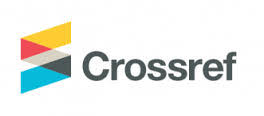The Degree of Artificial Intelligence Utilization in Administrative Decision-making among Academic Leaders at Al al-Bayt University.
DOI:
https://doi.org/10.59759/educational.v4i3.1167Keywords:
Artificial Intelligence, Administrative Decision, Al al-Bayt University.Abstract
The study aimed to identify the degree of artificial intelligence utilization in administrative decision-making among academic leaders at Al al-Bayt University. The researchers used a questionnaire as a tool for data collection, and a simple random sampling method was employed, resulting in a sample of 108 faculty members. The descriptive survey method was utilized due to its appropriateness for the nature of the study.
The study concluded with several findings, the most significant of which include: the degree of artificial intelligence utilization in administrative decision-making was found to be moderate. The results indicated statistically significant differences attributed to the gender variable in all dimensions except for the administrative requirements. Additionally, differences were found related to the academic title variable in the dimensions of material and infrastructure requirements, as well as human resource requirements. Differences attributed to the years of experience variable were also present in all dimensions of artificial intelligence utilization in administrative decision-making.
The researchers recommended several actions, including: enhancing the participation of students, faculty members, and staff in formulating ethical policies related to the use of artificial intelligence, and establishing a clear plan to attract specialized human expertise in artificial intelligence through hiring, contracting, or academic partnerships.
Downloads
References
Anupama, P ., Densy,V., Priyanka, S. & Bindhya, T. (2023): Role of Artificial Intelligence and Business Decision Making, International Journal of Advanced Computer Science and Applications. 14(6): 965 -969.
Balbaa, M. & Abdurashidova, M. (2024): The Impact of Artificial Intelligence in Decision Making: A Comprehensive Review, EPRA International Journal of Economics Business and Management Studies. 11(2): 27 – 38.
Baltzersen, R. K. (2022). Cultural-Historical Berspectives on Collective Intelligence. Cambridge University Press.
De Freitas,J, Agarwal, S. Schmitt, B, & Haslam, N. (2023) Psychological Factors Underlying Attitudes toward AI Tools. Nature Human Behaviour. 7(11): 1845 – 1854.
Devi, J.S, Sreedhar, M. B, Arulprakash, P., Kazi, K., & Radhakrishnan, R. (2022). Apath towards child- centric Artificial Intelligence baced Education International Journal of Early Childhood, 14(3):9915-9923.
Holmes , W, Bialik, M, & Fadel , C. (2023). Artificial Intelligence in Education. Promise and Implications for Teaching and Learning. Globethics Publications.
Kaplan, A. & Haenlein, M. (2019). Siri, Siri, in my hand: Who’s the fairest in the land? On the interpretations, illustrations, and implications of artificial intelligence. Business Horizons. 62(1): 15 – 25.
Kuleto, V, Ili ́c , M, , Dumangiu, M, Rankovi ́c ,M, Martins ,O, Paun. D , Mihoreanu, L. (2021). Exploring Opportunities and Challenges of ArtificialIntelligence and Machine Learning in Higher EducationInstitutions. Sustainability. 13(18): 10424.
Kushmar, L, Vornachev, A, Oleksandrivna, K & Oleksandrivna, K. (2022) Artificial Intelligence in Language Learning: What Are We Afraid of. Arab World English Journal. 8: 262-273.
Ocana-Fernandez, Y., Valenzuela- Fernandez, L ., & Garro-Aburto, L. (2019). Artificial intelligence and its implications in higher education. Propositions Representations, 7(2), 536-568.
Tomasik, B. (2019). Artificial Intelligence and Its Implications for Future Suffering. Foundational Reserch Institute, U. S.


